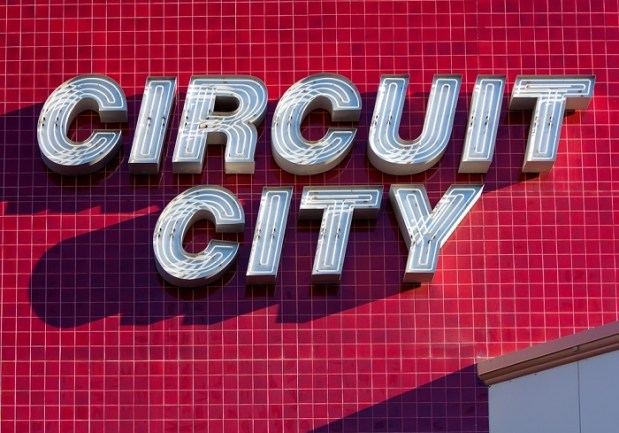Circuit City Rises From The Dead With A Millennial Focus

Few retailers encapsulated the ethos of the 1990s better than Circuit City. With its electric plug-shaped stores and preeminence at a time when the average American family was scooping up big screen TVs, Circuit City broke more than a few hearts when it closed its doors due to bankruptcy in 2008.
Thanks to two New York area entrepreneurs and a millennial rebrand, though, Circuit City is coming back from the dead.
That’s the story from Twice, which interviewed Ronny Shmoel and Albert Liniado, the two men behind the resurrection of one of the first mainstream consumer electronics retailers. The game has changed considerably since Circuit City’s heyday, though, and even still from its mid-2000s exit from the market. However, Shmoel and Liniado are planning on pivoting away from the tactics that helped the brand succeed in the 90s in favor of a more modern mindset.
“We want to bring profitability back into retail,” Liniado told Twice.
Instead of the old Circuit City’s almost singular reliance on selling even small products out of its brick-and-mortar stores, the two entrepreneurs will employ a small box format for their new storefronts. Between 2,000 and 4,000 square feet, the new locations will be centered in high-density areas instead of its spiritual predecessors’ preference for strip malls and standalone stores.
Because of this urban attitude, Shmoel and Liniado are taking a familiar page from the post-Apple consumer electronics playbook — open floor plans, hands-on tech displays and plenty of millennial-friendly tech. While they may not win any awards for breaking new ground that other smartphone and high-end consumer electronics retailers haven’t already embraced, Shmoel and Liniado are, at the very least, showing a willingness not to be stuck in a traditional mindset with an established brand. Shmoel indicated that Radioshack is one such retailer that’s managed to hang around, despite still practicing some of the old practices of simply hanging TVs on walls and waiting for customers to ask questions.
“There’s nothing attractive there; there’s no draw,” Shmoel told Twice. “We’re working with Sony PlayStation to create kiosks that carry wearables, phones and gaming.”
If anything, it’s the in-store experience that Shmoel and Liniado are looking to revamp with the Circuit City name. As most technology today doesn’t quite fit the mold of in-home products, like TVs and sound systems, it’s easier for customers to drop into a store and play around with the latest gadget for a few minutes. To that end, the new Circuit City will come back swinging with a sales force made up of trained customer service reps that the two entrepreneurs dub “specialists.”
“Why walk into a store?” he said. “It’s the convenience of buying something on the spot; it’s seeing and trying the product firsthand; and it’s to get advice from a trained, knowledgeable associate. That’s why we’re focused on sales training.”
Shmoel and Liniado have an initial goal of opening between 50 and 100 stores by 2017. However, those full storefronts will be supplemented by a wider network of standalone kiosks, pop-up shops in convenience stores and pharmacies and even branded sections of college bookstores to really nail home that millennial focus — all the while, selling smartphones and Bluetooth speakers on the go.
“The vendors were very excited,” Liniado told Twice of his conversations with clients at a recent trade show. “We want to become best partners with them. Brands have become diminished in lieu of price, and consumer education has worsened with the growth of the Web.”
So, which will it be? Have Shmoel and Liniado judged the market correctly and are relaunching Circuit City at a time when consumers are hungry for more hands-on tech? Or will they find out that the brand should have been left to the annals of retail history?